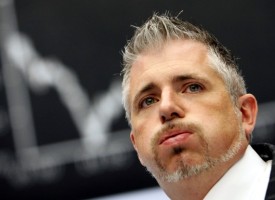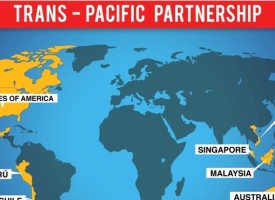Things are getting bad out there right now. Look at how many people are struggling.
Going Out Of Business
July 18 (King World News) – Gerald Celente: Each week in The Trends Journal we report on businesses going out of business. And we had forecast that by the numbers, a bad situation would become much worse. Confirming our trend forecast, in June, 75 U.S. companies filed for bankruptcy, the most in any month since early in 2020 as the COVID War raged, S&P Global Intelligence reported.
Bankruptcies that made headlines last month were Chicken Soup for the Soul and electric vehicle maker Fisker.
June’s filings brought the number of business bankruptcies this year to 346, the most during any year’s first half since 2010. In that year, 437 businesses filed bankruptcies from 1 January through June.
This year’s failures have been due to a combination of high interest rates, slowing consumer spending, and lingering supply chain issues, S&P said.
The tide of business failures began rising notably in April “as it dawned on many businesses that rates would likely remain at peak levels for some time,” Fox Business said.
Interest rates are now at their highest since 2001 as the U.S. Federal Reserve raised them to fight off inflation. Analysts and investors see a strong likelihood the central bank will reduce its rates by a quarter point in September.
Some are urging the Fed to cut rates now, and to make at least two cuts this year, to reduce risks to businesses and to the larger financial system.
“As last year’s banking crisis showed, the relentless strain of high rates can cause parts of the financial system to buckle in ways that are difficult to predict or control,” Mark Zandi, Moody’s chief economist, wrote in a recent Washington Post opinion essay.
“Fading hopes of lower interest rates are likely contributing to the increase in filings as companies that may have held out hope for rate cuts at the beginning of the year come to terms with the reality that they will remain higher for longer,” S&P noted…
Listen to the greatest Egon von Greyerz audio interview ever
by CLICKING HERE OR ON THE IMAGE BELOW.
TREND FORECAST:
Interest rates have remained high for so long that companies that could have survived in pre-COVID times will be unable to endure in a high-rate environment. What is long forgotten and “ancient” history is how politicians who destroyed the economy with their draconian lockdown mandates to fight the COVID War artificially pumped up the economy by pumping in trillions of dollars of fake money backed by nothing and printed on nothing.
And now, while economic reality has zero to do with Wall Street, it has hit Main Street. People broke and busted, working in low-paying jobs as inflation keeps eating away the little money they are making.
Many companies that could have operated normally in pre-COVID times will not be able to continue now.
The Fed will lower its key interest rates slowly over many months and preside over an increasing number of bankruptcies even as rates come down.
More People Are Struggling
Old news to Trends Journal subscribers, but now it’s finally making the mainstream media… U.S. consumers are being squeezed harder between high interest rates, heavy debts, and depleted savings, megabanks Bank of New York Mellon (BNY), Citigroup, JPMorgan Chase, and Wells Fargo said on 10 July in reporting their quarterly results.
This month, consumer sentiment measured in the University of Michigan’s monthly survey fell to a rating of 66, its lowest in eight months.
Profits in Citigroup’s consumer lending division, which includes credit cards, plunged 74 percent, year on year, in the second quarter.
“We’re not seeing the same growth in consumer spending that we had in prior quarters,” Citigroup CFO Mark Mason said in a 10 July call with reporters. “There was less traffic in the retail venues we partner with.”
The consumer economy overall is “fine,” according to Jeremy Barnum, JPMorgan’s financial chief, but low-income households are struggling more.
“You can see the early signs of that portion of the population” without money to invest in stocks “having depleted the reserves they built up during the [COVID War] and are confronting the fact that the overall level of prices is just higher,” Robin Vince, BNY’s CEO, said to reporters.
“When you look below the surface, you see that low-income folks are struggling,” Wells Fargo CFO Mike Santomassimo said on his call.
Citigroup, JPMorgan, and Wells Fargo all reported reduced incomes from their loan portfolios.
The large banks charged higher interest rates for loans but did not boost rates they pay savers, the FT noted. Banks have been setting aside larger cash cushions against an expected rise in bad loans, especially in commercial real estate.
TREND FORECAST:
U.S. consumers as a group are not “fine.” Low-income earners are not the only ones who are struggling.
During a time of high interest rates, consumers continued to spend, running through their COVID-era savings windfalls and piling up debt on credit cards. With little space left between bills and paychecks, consumers are shifting to thrift instead of spending as an operating principle.
Therefore, even as interest rates fall, there will be no sustained surge in consumer outlays that take the economy back to the pre-COVID days before the lives and livelihoods were destroyed with some three years of draconian lockdown imposed by politicians.
It will take years yet for the economy to work its way back to stability and will take households years beyond that to battle back the debt burden they carry now.
As a result, and barring any black swan events, the U.S. consumer economy will grow only modestly for at least the next several years.
***To listen to Alasdair Macleod discuss how to make a fortune in this gold bull market CLICK HERE OR ON THE IMAGE BELOW.
© 2024 by King World News®. All Rights Reserved. This material may not be published, broadcast, rewritten, or redistributed. However, linking directly to the articles is permitted and encouraged.









